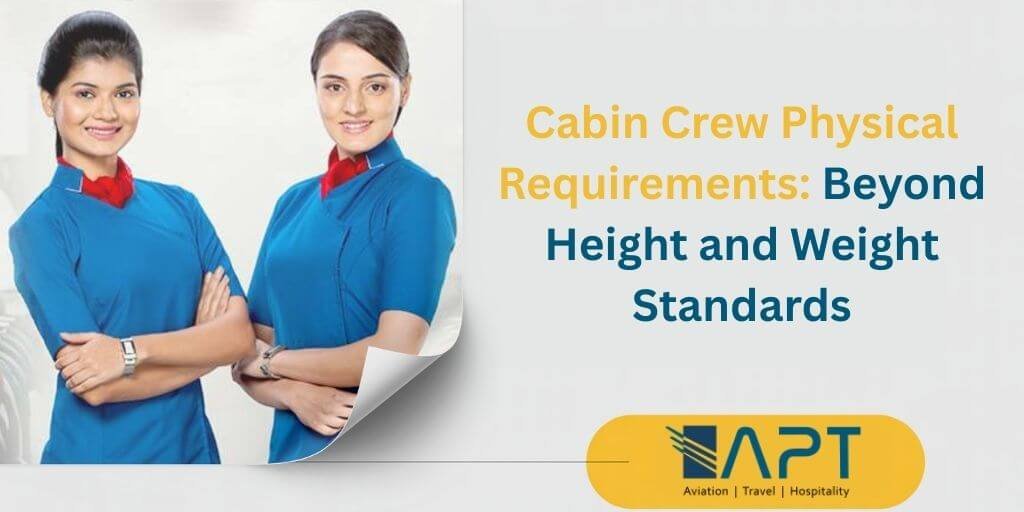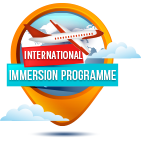Want to begin a cabin crew career but overwhelmed with the physical requirements? Don’t rely on becoming skinny or tall. These measurements aren’t just about having a crew with the perfect looks. There’s deep logical reasoning behind it.
The Science Behind Proportional Requirements
Conventional beauty standards are the last priority of any airline when looking for cabin crew. There isn’t any fixed height and weight you can attain. These measurements are a necessity to be able to carry out all onboard duties with ease and vary from person to person. Usually airlines will have a lower and upper limit for height, often the minimum height being able to reach the luggage compartments comfortably while the maximum being able to walk the aisle with ease without bending or straining their bodies.
For weight, the Body Mass Index (BMI) is a good place to start understanding your perfect weight corresponding to your height, 18.6 to 24.9 being the normal range. This ensures all cabin crew members are physically fit and are able to carry out demanding tasks while not sacrificing their health.
Research shows that maintaining proportional height-to-weight ratios directly impacts cardiovascular endurance, joint stability, and overall stamina—critical factors when working 12-hour shifts at 35,000 feet. Flight attendants regularly lift overhead baggage weighing up to 35 pounds, navigate cramped aircraft interiors, and must be capable of emergency evacuations within 90 seconds.
Functional Fitness Over Aesthetic Standards
Modern airlines no longer have to follow the rigid and superficial beauty standards that were once the foundation of becoming cabin crew. Today, being fit in a way that enables one to perform all necessary functions is the best bet to getting selected to your dream job in the skies. Having core strength is vital, to remain stable during turbulence, being flexible enough to reach all safety equipment and having the stamina to endure long-haul flights that span multiple time zones.
The physical demands extend beyond visible tasks. Crew members experience cabin pressure equivalent to 8,000 feet altitude, dehydration from recycled air, and disrupted circadian rhythms. A well-proportioned physique typically indicates the metabolic efficiency needed to adapt to these unique environmental stressors.
Brand Representation Through Wellness
With the number of airlines available today, matching fares and comfort isn’t enough. Having a brand image that appeals to a broad audience is essential, making the cabin crew not just employees but brand ambassadors. Once upon a time, the brand image was all about having the most conventionally attractive crew. This outdated representation has now shifted to focus more on health, vitality, and professional competence. When height and weight are balanced, it often reflects lifestyle habits that translate into better customer service—higher energy levels, improved mood stability, and enhanced cognitive function during demanding situations.
International carriers report that crew members maintaining healthy proportions demonstrate 23% fewer sick days and show greater resilience during challenging passenger interactions or flight disruptions.
Safety Performance and Physical Readiness
Emergency scenarios demand split-second physical responses. Cabin crew are the first line of defense during emergencies, making split-second decisions, assisting passengers down emergency slides, carrying injured individuals, and opening the heavy aircraft doors. Crew members are required to demonstrate they can open emergency exits weighing up to 60 pounds and help passengers during evacuations.
Proportionate body composition supports better leverage mechanics, reduces injury risk, and ensures sustained performance during crisis situations. Airlines conduct annual physical assessments not for appearance but to verify continued capability to fulfill these life-saving responsibilities.
Holistic Assessment Criteria
Evaluation of cabin crew involves a series of assessments, ranging from analyzing emotional intelligence, ability to adapt to different cultures, approach to managing crises, effective communication, and ability to remain calm during emergencies. These assessments often weigh more heavily than precise measurements.
Many successful cabin crew members report that their passion for travel, genuine desire to serve others, and adaptability to changing situations proved more valuable than meeting exact physical specifications.
Professional Development Path
If you really want to launch a successful cabin crew career, enrolling in one of the best cabin crew training colleges in Kolkata, is an important first step. The curriculum of the programs offered balance both physical requirements and development of professional etiquette and skills.
Quality training programs offer nutrition counseling, fitness coaching, grooming standards education, and mock interview preparation—creating well-rounded candidates who exceed industry expectations.
Your Journey Forward
The aviation industry appreciates a crew that is classy, healthy, and professional at service. Proportionate height and weight are important but not the deciding factor.
Pay attention to developing the whole range of skills-—physical fitness, emotional intelligence, cultural understanding, and true love of hospitality. This combination of factors when combined with the right physical dimensions will not only comply with the airline standards but also perform above and beyond establishing the most memorable experiences among passengers worldwide.
Your cabin crew experience starts with knowing that real preparation goes way beyond the scale: It is about being the solid, capable professional the skies are waiting to see.


